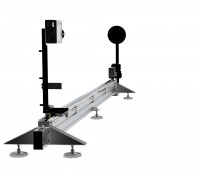Este producto ya no se fabrica. Es posible que queden existencias. Consulte las alternativas que figuran a continuación en "Productos similares" o póngase en contacto con nosotros directamente.
Productos alternativos para este producto descatalogado:
GB-GD-360-RB40-2-BTS256-LED
Goniometer system for the luminous flux and light color measurement of individual 2π light emitting diodes with BTS256-LED
- Adjustable measurement distance up to 2000 mm
- Compact Goniometer
- Spectral light meter with Bi-Tec sensor for accurate measurement of the luminous flux, spectral radiant power, CCT, CRI, chromaticity coordinates, IES, EULUMDAT, etc.
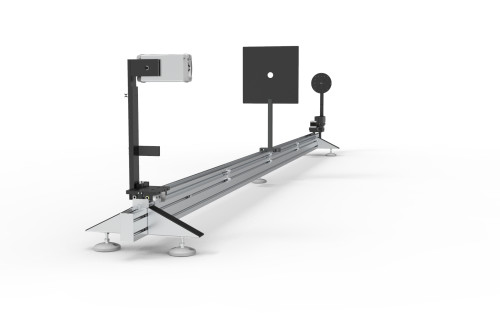
Medición de la distribución de la intensidad luminosa
La distribución de la intensidad luminosa se utiliza para especificar las características de radiación direccional de las lámparas. Se determina mediante numerosas mediciones independientes de la intensidad luminosa. Cada medición detecta la luz emitida en el semiespacio alrededor de la lámpara bajo un ángulo de visión diferente. Los datos de medición se representan en diagramas polares y gráficos 3D y se muestran en formatos estándar, por ejemplo, IES, EULUMDAT, Excel, etc. Estos datos también se pueden utilizar para calcular el flujo luminoso.
El fotómetro BTS256-LED
En su modo autónomo, el fotómetro compacto BTS256-LED está diseñado para la medición cómoda del flujo luminoso, el espectro, el color y el índice de reproducción cromática de LED individuales. Una característica clave es el puerto de medición cónico en la entrada de la esfera integradora interna que permite la medición de LED integrados. El conector de bayoneta utilizado para conectar el adaptador cónico permite combinar el BTS256-LED con otros componentes accesorios. Gigahertz-Optik ofrece diferentes accesorios como parte del concepto BTS256-LED Plus que amplían enormemente las capacidades de medición del BTS256-LED. Entre ellos se encuentra la ventana difusora BTS256-LED-DA que facilita las mediciones de iluminancia e intensidad luminosa.
Mejora del BTS256-LED mediante el goniómetro GB-GD-360-RB40-2
El espectrorradiómetro BTS256-LED-DA se puede combinar con el goniómetro GB-GD-360-RB40-2 para medir distribuciones de intensidad luminosa. A diferencia de otros espectrómetros de matriz de diodos disponibles en el mercado, el sensor BiTec del BTS256-LED ofrece la opción de realizar la medición únicamente con su fotodiodo fotométrico. Sus cortos tiempos de medición permiten realizar mediciones mucho más rápidas que los espectrómetros convencionales. En los casos en los que también se necesitan espectro, color e índice de reproducción cromática, se puede utilizar el espectrómetro basado en matriz del sensor BiTec. El goniómetro GB-GD-360-RB40-2 permite la alineación de la lámpara de prueba con el dispositivo con dos grados de libertad. Los movimientos giratorios se controlan de forma remota a través de accionamientos de motor paso a paso. El plato giratorio tiene una disposición de orificios M4 para la fijación universal de las lámparas de prueba. Cuatro minizócalos proporcionan una conexión de cuatro terminales. El plato giratorio permite un ajuste fino con un recorrido de 5 mm y un ajuste grueso con un recorrido de 100 mm para la alineación de las lámparas de prueba en el eje goniométrico. Se integra un tope extraíble para ayudar a la alineación de la lámpara de prueba en el eje goniométrico. La distancia entre el dispositivo y la lámpara de prueba puede variar entre 100 mm y 2000 mm. La distancia corta se elige para la medición de LED individuales con baja intensidad. La distancia más larga es más adecuada para la medición de matrices de LED extendidas y lámparas de LED. El amplio rango dinámico del GB-GD-360-RB40-2-BTS2048-VL lo hace más adecuado para la medición de lámparas de foco que tienen un perfil de borde distintivo. El carril del carro guía está reforzado con una base estable. El BTS256-LED y el BTS256-LED-DA también se pueden utilizar sin el goniómetro.
Software
El software de usuario del S-BTS256 permite el funcionamiento del goniómetro y la visualización de los valores de medición. Se puede utilizar para crear secuencias de medición, así como para configurar diferentes ajustes. Los datos de medición se pueden exportar a formatos estándar como IES, EULUMDAT, ASCII y Excel. Además de la visualización de la distribución de la intensidad luminosa en gráficos polares y gráficos 3D, el software también se puede utilizar para calcular el flujo luminoso, así como para mostrar el espectro, los valores de color, etc.
Calibración
Una característica de calidad esencial de los dispositivos fotométricos es su calibración precisa y trazable. El BTS256-LED-DA ha sido calibrado por el laboratorio de calibración de Gigahertz-Optik, acreditado por DAkkS (D-K-15047-01-00) para la respuesta espectral y la irradiancia espectral según la norma ISO/IEC 17025. La calibración también incluye los accesorios correspondientes. Cada dispositivo se entrega con su correspondiente certificado de calibración.
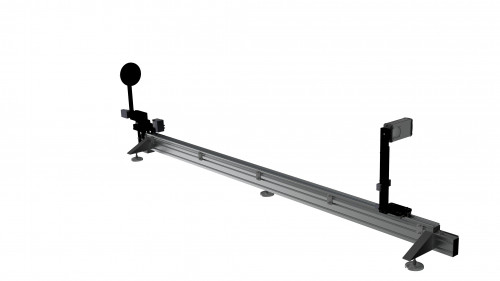
BTS256-LED spectroradiometer with the GB-GD-360-RB40-2 goniometer
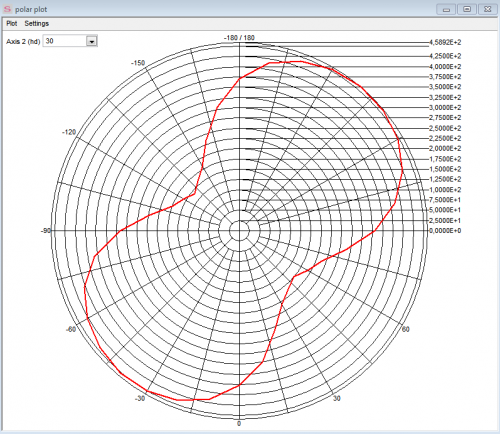
Display of the luminous intensity distribution in a polar diagram
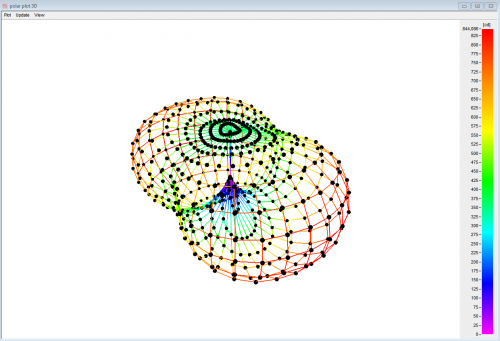
Display of the luminous intensity distribution in a 3D diagram
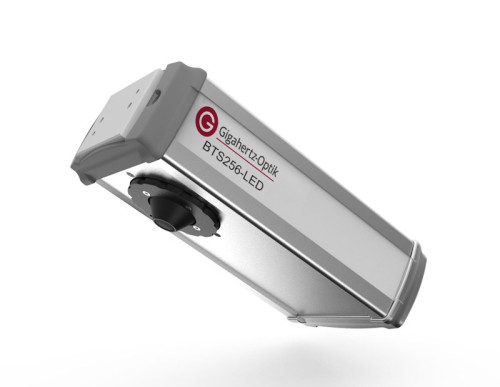
BTS256-LED for measurement of the luminous flux, spectrum, color, and color rendering index of single LEDs
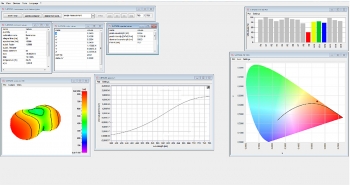
The S-BTS256 user software supports measurement and display of the luminous intensity distribution curve in 2D and 3D.
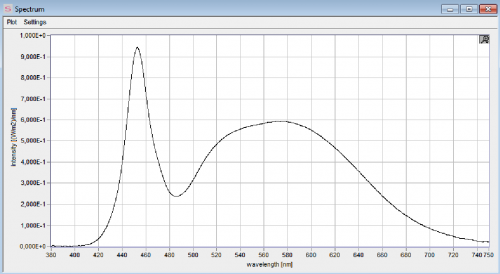
Full screen display of the luminous spectrum
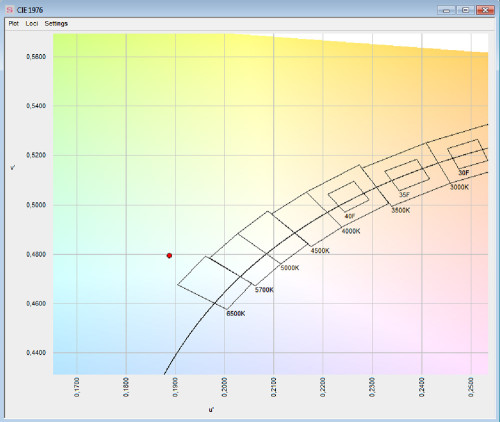
CIE 1976 chromaticity diagram with binning fields
Productos similares
